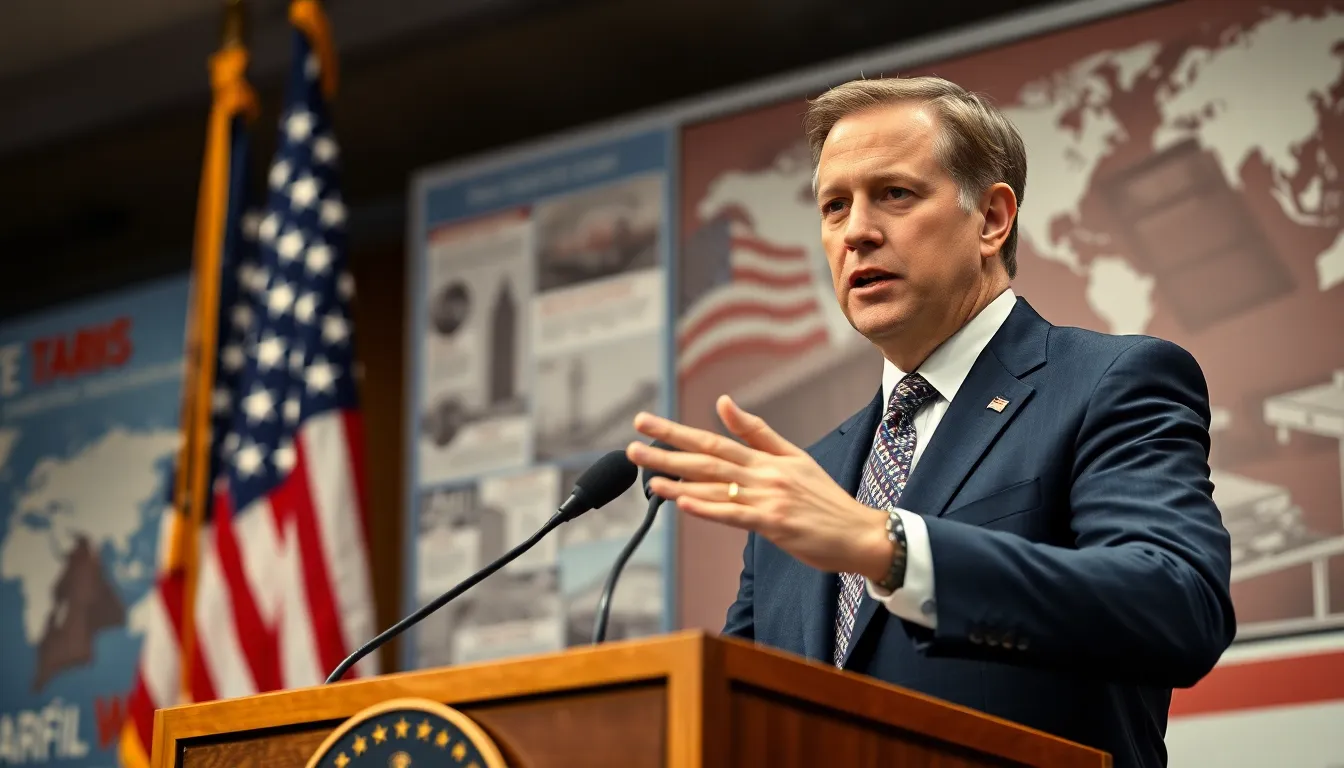Tariffs can feel like that surprise pop quiz you never studied for—one minute you’re cruising along, and the next, you’re scrambling to figure out what just hit you. As countries adjust their trade policies, the question on everyone’s mind is: when will these tariffs actually take effect? Understanding this timeline isn’t just for economics aficionados; it’s crucial for businesses and consumers alike trying to navigate the choppy waters of international trade.
Table of Contents
ToggleUnderstanding Tariffs
Tariffs play a crucial role in international trade and understanding them enhances economic awareness. Knowledge about their implementation date assists both businesses and consumers in navigating trade landscapes.
Definition of Tariffs
Tariffs represent taxes imposed on imported goods. Governments utilize tariffs to regulate trade and generate revenue. Import duties serve as a financial measure, increasing the cost of specific products. These tariffs influence market prices, making domestically produced goods more competitive. Additional contexts arise with various types of tariffs, such as ad valorem and specific tariffs. Countries frequently adjust tariffs based on political and economic conditions.
Purpose of Implementing Tariffs
Governments implement tariffs to protect domestic industries from foreign competition. Protecting local jobs often drives these decisions. Tariffs also serve to generate revenue for government budgets, particularly in developing nations. By regulating imports, authorities can stabilize local markets and control excess foreign goods. Trade negotiations frequently hinge on tariff levels, influencing diplomatic relations and trade agreements. Creating a level playing field for domestic producers remains a fundamental purpose of implementing tariffs.
Key Factors Influencing Tariff Implementation

Tariffs are influenced by multiple factors that shape trade policies. Understanding these variables aids businesses and consumers in preparing for potential changes.
Economic Conditions
Economic stability plays a crucial role in tariff decisions. Countries with strong economic growth might impose tariffs to protect emerging industries. Fluctuations in currency values can also impact tariff effectiveness. Inflation rates trigger reviews of existing tariffs to adjust them for economic realities. Additionally, global supply chain dynamics affect how tariffs are structured. When economies face recessions, governments often reconsider tariffs to boost domestic production and spending.
Political Climate
Political factors have a significant impact on tariff implementation. National elections can lead to shifts in tariff policies as new administrations prioritize different economic strategies. Public opinion also influences lawmakers as they decide on tariffs. Trade relations with other nations can improve or worsen based on political alliances and conflicts. Decisions to implement tariffs may arise from lobbying efforts by domestic industries seeking protection. International diplomatic negotiations often revolve around tariff adjustments, reflecting the broader political landscape.
Timeline of Recent Tariff Changes
Understanding the timeline of tariff changes is crucial for businesses and consumers navigating international trade. Tariffs can shift rapidly based on political and economic factors.
Historical Context
Recent years have seen significant alterations in tariff structures. The U.S. implemented tariffs on steel and aluminum in 2018, aiming to protect domestic industries. China’s response included tariffs on numerous American goods. Trade conflicts intensified during 2020, leading to heightened tariffs on various product categories. Agreements, like the Phase One trade deal in January 2020, focused on tariff reductions but did not eliminate existing tariffs completely. Historical adjustments highlight how quickly tariff policies can change based on geopolitical dynamics.
Upcoming Tariff Announcements
Anticipation surrounds potential upcoming tariff announcements. In early 2024, discussions may revive regarding tariffs on digital services. Officials have hinted at reevaluating tariffs on certain consumer goods. Businesses should monitor negotiations closely, as any agreements could impact price points and supply chains. Key industries, including technology and agriculture, may experience significant changes. Documenting these developments keeps stakeholders informed of crucial shifts in international trade policy.
Impacts of Tariffs
Tariffs significantly shape economic landscapes, influencing both domestic economies and international trade relations.
On Domestic Economy
Tariffs impact domestic economies by altering production costs for businesses. Increased tariffs on imported goods can lead to higher prices for consumers, which affects purchasing power. Businesses relying on imported materials often face increased expenses, compelling them to adjust pricing strategies. Enhanced protection for domestic producers may occur, which can lead to job creation in certain sectors. Economic stability remains crucial; fluctuations may prompt government reviews and adjustments of tariff levels. Various factors, including inflation rates and currency values, come into play when evaluating impacts on the domestic economy.
On International Trade Relations
International trade relations may shift dramatically due to tariffs. Countries often respond to tariffs with retaliatory measures, escalating trade tensions. Diplomatic relations frequently hinge on tariff negotiations, impacting broader trade agreements. Businesses face uncertainty as tariff changes can disrupt supply chains, prompting companies to seek alternative markets. Tariffs also influence global competitiveness; nations without barriers may gain an advantage over those enforcing restrictive policies. These dynamics contribute to a complex web of international economics that requires constant monitoring by stakeholders.
Understanding when tariffs take effect is crucial for navigating the complexities of international trade. Businesses and consumers must stay informed about upcoming changes to adapt effectively. As global economic conditions and political climates evolve tariffs can shift unexpectedly, impacting various industries.
With potential announcements on the horizon in early 2024 it’s essential for stakeholders to monitor these developments closely. This vigilance not only aids in strategic planning but also helps mitigate risks associated with fluctuating trade policies. Ultimately staying ahead of tariff changes can provide competitive advantages in a rapidly changing marketplace.








